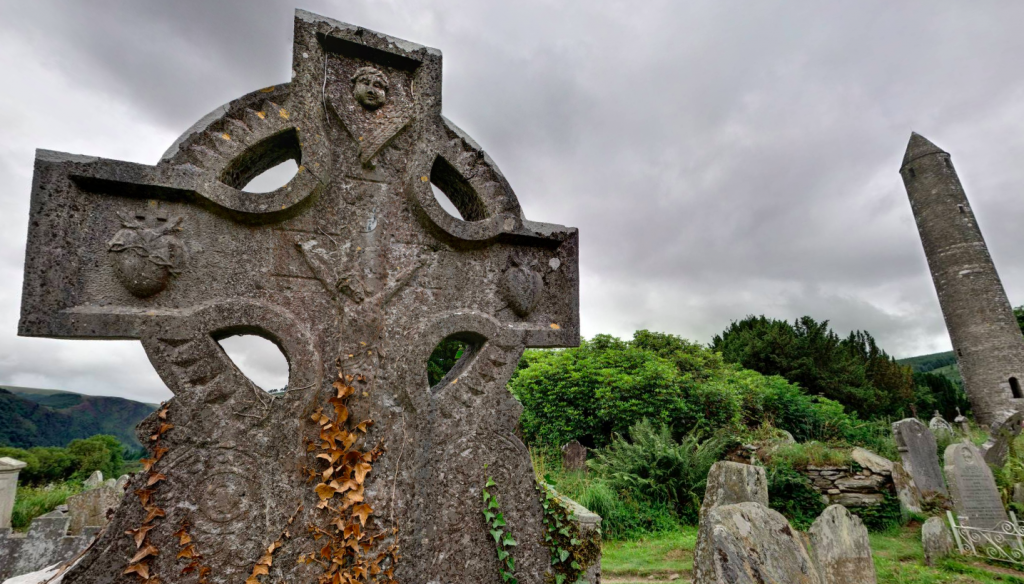When I first arrived at Glendalough, I was overtaken by the overwhelming bursts of green. The sky was dark and cloudy but the earth was covered in luscious grass and trees with varied hues. As I made my way around, I noticed the remnants of old churches and a tower that seemed to be the hallmark of this incredible site. I noticed the headstones, each with their own intricate carvings and prominent details. The brilliant colors came to life as the surrounding nature told the fascinating story of Wicklow, the blossoming countryside, and the vibrant history of this monastic site.

The striking juxtaposition that exists here, however, cannot be overlooked. Among lush greenery and tremendous natural beauty lies a cemetery. At first glance, this contrast seemed quite stark, and I questioned how two very different things, a site for the dead and a lively green backdrop, could coexist so seamlessly.
But suddenly I recalled the words of Eavan Boland’s, “That the Science of Cartography is Limited.” The speaker tells the story of the famine roads—how rich history is woven into the Irish earth. As the speaker learns of the landscape’s tragic past, it takes on a whole new meaning. The “ivy and scutch grass” is no longer separate from “the starving Irish.” And although she comes to this realization, it isn’t entirely sad.
Much like the nature and history of Glendalough, preserving the past, and keeping its memories alive, can evoke both sadness and beauty. And although cemeteries such as this one are often associated with eeriness and mourning, they can also be sites that attract visitors. They can reflect the culture and traditions of a specific place. The burial ground is surrounded by an abundance of nature, proving that life continues on even amidst sorrow. New life can stem from loss.

Wow, what a lovely comparison. I am sure that the people that come to visit the cemetery to mourn their loved one appreciate that beauty still exists and is everywhere. It is like nature’s way of comforting the living through their loss. The seemingly odd combination of death and beauty makes me reflect on Newgrange, which also merges death and beauty. There is art and awe throughout the structure, even though it is a tomb. It seems that humans have always tried to find the beauty or positivity in hurt and sadness.
I really appreciate this contrast that you’ve drawn attention to in this post. It’s definitely interesting to consider the difference in aesthetics that mark this site: the aging tombs versus the striking green hues which we often associate with life. It also complicates our conceptions of what is “alive” or “dead.” Despite their apparent eeriness and implication of death, the tombs also possess their own haunting, innate beauty. While they symbolize the ending of life, perhaps alternatively they represent that which is eternal and everlasting.